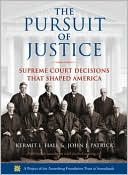Category Books
- Fiction Books & Literature
- Graphic Novels
- Horror
- Mystery & Crime
- Poetry
- Romance Books
- Science Fiction & Fantasy
- Thrillers
- Westerns
- Ages 0-2
- Ages 3-5
- Ages 6-8
- Ages 9-12
- Teens
- Children's Books
- African Americans
- Antiques & Collectibles
- Art, Architecture & Photography
- Bibles & Bible Studies
- Biography
- Business Books
- Christianity
- Computer Books & Technology Books
- Cookbooks, Food & Wine
- Crafts & Hobbies Books
- Education & Teaching
- Engineering
- Entertainment
- Foreign Languages
- Game Books
- Gay & Lesbian
- Health Books, Diet & Fitness Books
- History
- Home & Garden
- Humor Books
- Judaism & Judaica
- Law
- Medical Books
- New Age & Spirituality
- Nonfiction
- Parenting & Family
- Pets
- Philosophy
- Political Books & Current Events Books
- Psychology & Psychotherapy
- Reference
- Religion Books
- Science & Nature
- Self Improvement
- Sex & Relationships
- Social Sciences
- Sports & Adventure
- Study Guides & Test Prep
- Travel
- True Crime
- Weddings
- Women's Studies
The Pursuit of Justice: Supreme Court Decisions that Shaped America » (1st Edition)

Authors: Kermit L. Hall, John J. Patrick
ISBN-13: 9780195311891, ISBN-10: 0195311892
Format: Hardcover
Publisher: Oxford University Press, USA
Date Published: November 2006
Edition: 1st Edition
Author Biography: Kermit L. Hall
Book Synopsis
With a survey of the thirty Supreme Court cases that, in the opinion of U.S. Supreme Court justices and leading civics educators and legal historians, are the most important for American citizens to understand, The Pursuit of Justice is the perfect companion for those wishing to learn more about American civics and government. The cases range across three centuries of American history, including such landmarks as Marbury v. Madison (1803), which established the principle of judicial review; Scott v. Sandford (1857), which inflamed the slavery argument in the United States and led to the Civil War; Plessy v. Ferguson (1896), which memorialized the concept of separate but equal; and Brown v. Board of Education (1954), which overturned Plessy. Dealing with issues of particular concern to students, such as voting, school prayer, search and seizure, and affirmative action, and broad democratic concepts such as separation of powers, federalism, and separation of church and state, the book covers all the major cases specified in the national and state civics and American history standards.
For each case, there is an introductory essay providing historical background and legal commentary as well as excerpts from the decision(s); related documents such as briefs or evidence, with headnotes and/or marginal commentary, some possibly in facsimile; and features or sidebars on principal players in the decisions, whether attorneys, plaintiffs, defendants, or justices. An introductory essay defines the criteria for selecting the cases and setting them in the context of American history and government, and a concluding essay suggests the role that the Court will play in the future.
Table of Contents
Subjects
 Constitutional Law
Constitutional Law  Judicial Branch
Judicial BranchLaw
 Constitutional Law
Constitutional Law  Supreme Court
Supreme CourtLaw
 Constitutional Law
Constitutional Law  U.S. Constitution
U.S. ConstitutionLaw
 Legal Reference
Legal Reference  Cases - Legal Reference
Cases - Legal ReferenceNonfiction
 Law
Law  Constitutional Law
Constitutional LawNonfiction
 Law
Law  Legal Reference
Legal ReferencePolitical Books & Current Events Books
 Supreme Court
Supreme Court  Cases of the Supreme Court
Cases of the Supreme CourtPolitical Books & Current Events Books
 United States Politics
United States Politics  Judicial Branch
Judicial BranchPolitical Books & Current Events Books
 United States Politics
United States Politics  Supreme Court
Supreme CourtPolitical Books & Current Events Books
 United States Politics
United States Politics  U.S. Politics - General & Miscellaneous
U.S. Politics - General & MiscellaneousPolitical Books & Current Events Books
 All Politics
All Politics  United States Politics & Government
United States Politics & GovernmentReference
 Legal Reference
Legal Reference  Cases - Legal Reference
Cases - Legal ReferenceNonfiction
 Politics & Current Affairs
Politics & Current Affairs  Supreme Court
Supreme CourtNonfiction
 Politics & Current Affairs
Politics & Current Affairs  United States Politics
United States PoliticsNonfiction
 Politics & Current Affairs
Politics & Current Affairs  All Politics
All PoliticsNonfiction
 Reference
Reference  Legal Reference
Legal ReferencePolitical Books & Current Events Books
 Law
Law  Constitutional Law
Constitutional LawPolitical Books & Current Events Books
 Law
Law  Legal Reference
Legal Reference
